Doesn't see the flash drive what to do. There are signs of life - the indicator is flashing. Installing and running Handy Recovery
Modern technologies sometimes boggle the imagination. Judge for yourself - if a few years ago a 40 GB hard drive was striking in its size, now there are flash drives, the volume of which reaches several terabytes! Fantasy! True, the cost of such a device also seems fantastic ... But small flash cards are in great demand, because they are very convenient (they can be used for various files, including photos or music) and are quite inexpensive. But whether you have an expensive flash drive or a cheap one, malfunctions can happen with it. We will talk about one of them today.
Why can't the computer see the USB flash drive?
The first thing you need to understand as a device user is that the problem is not necessarily the card itself. It is possible that it comes from a laptop or computer (depending on what you are using). There are different cases and within the framework of our article we will try to cover them all.
How to find out what the problem is exactly? There is only one proven way - to use the second PC that you have at hand. If the device runs on a second computer, then something else is involved, but if it refuses even to show signs of life, then ... It is best to buy a new flash card, because its cost starts at 200 rubles. However, if valuable data remains on it, then it is better to restore it through specialists - although it is expensive, the probability of getting the data back is very high.
The first thing you need to pay attention to is the health of the USB ports. That is, you need to make sure the ports are working. Perhaps they were not connected at all when assembling the system unit, which happens quite often if you purchased a computer from a little-known company. However, this problem is often relevant for older laptops as well. The fact is that they simply do not have enough power to start the device, especially if a number of other components are connected to the laptop, for example, a mouse, webcam, keyboard, and so on. If everything is more or less clear with a laptop, then with a regular PC the problem is solved very simply - you need to insert a flash card into any other port, obviously a working one. Usually these are located on the back of the system unit.
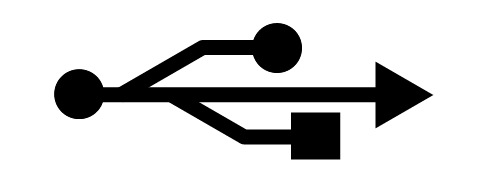
Continuing to talk about USB ports, one cannot but mention the BIOS. The fact is that in some cases, the ports can be turned off on their own at the software level, for example, with a sharp surge in electricity. You need to go to BIOS and connect the ports yourself.

Sometimes the operating system is automatic mode assigns the device the letter of the existing device. For example, your hard drive is designated with the letter H and the system assigns the same letter to the USB flash drive. The solution to this situation is quite simple, even for a beginner. Click the "Start" button, select "Control Panel" - "Administrative Tools" - "Computer Management" - "Storage Devices" - "Disk Management". A window will open in which you can see all storage devices that are connected to your PC in this moment... Select a flash card, click on it right click mouse and click on "Change drive letter or drive path ...". You can choose any letter, the main thing is that it would not be used. After that, you will see a USB stick. If this does not happen, as a last resort, remove and insert it into the USB port again.
For older PCs and laptops, the problem may be with outdated motherboard drivers. But this can be solved very simply. You should find out which motherboard is in your computer (you can find out, for example, through the control panel), go to the manufacturer's official website and find latest drivers... Even for old components, they are periodically updated. This software is distributed exclusively free of charge.

The computer may not see the driver of the flash drive itself. It turns out as follows - you need to go to the "Task Manager", and find the USB controllers in the list of devices. If in front of one or more devices there will be Exclamation point, then you have hit the mark. You need to remove these devices, after restarting the computer, they should recover on their own. However, this does not always happen and sometimes you need to install the drivers yourself, so it is dangerous to use this method if you are still new to this business. Be careful!

In theory, the problem can be encountered due to viruses that are present in the operating system. To find out, you need to malicious files... As a rule, most antiviruses are paid, but some of them provide free versions, which differ in a smaller set of additional functions. In addition, you can always use free utilities that can be downloaded from the website of companies such as Dr. Web or Kaspersky.
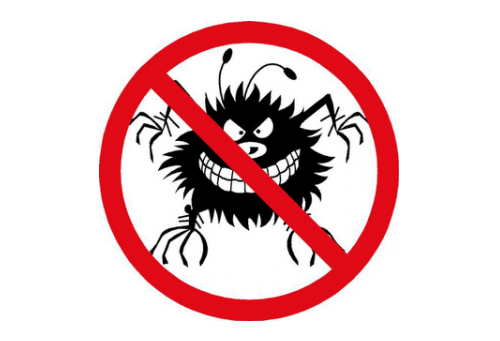
Finally, file system conflicts can occur. For example, your computer system is FAT32 and flash cards are NTFS. The solution is simple - you need to format the USB flash drive in FAT32 or, accordingly, vice versa. However, in this case, all data from the device will be deleted.
Dear Readers! If you have your own solution to this issue, please write about it in the comments. Perhaps your words will help someone.
Removable disks such as "flash drive" (USB Flash Disk) are portable devices designed to store and quickly transfer data from one PC to another by connecting to USB port... Due to their compactness and ease of use, flash drives are becoming more and more popular. Their information capacity has already reached 64 gigabytes and, apparently, this is not the limit.
Due to a number of features ("hot" connection, exposure to electrostatics, moisture, temperature, mechanical stress, normal wear and tear due to a limited number of read / write cycles) flash drives are relatively often out of order.
To extend the lifespan of your flash drives, there are certain guidelines to follow:
Activate the function "Optimize for quick removal". To do this, right-click the icon My Computer - Properties - System Properties - Hardware tab - Device Manager - in the opened Device Manager dialog box - open the plus sign Disk devices - select your flash drive by left-clicking, right-clicking - from the context select Properties from the menu (or double-click the left mouse button) - in the Properties dialog box that opens, open the Policy tab - select the Optimize for quick removal radio button - OK.
Although the above setting disables write caching in Windows and, in addition, the USB interface allows hot-plugging, always use the Safely Remove Hardware function using the icon of the same name (in the notification area next to the clock). To do this, click on the icon with the left mouse button, select "Safely remove USB mass storage devices" from the context menu.
If, when you try to remove the USB flash drive via the Safely Remove Hardware icon, the dialog box appears "Problem while removing USB Mass Storage Device: Universal Volume Device cannot be stopped right now. Try to stop it later", it means that some files are open with flash drives. Close them and try again.
Take good care of your USB flash drive: do not expose it to shock, moisture or strong electromagnetic fields.
Do not remove the USB flash drive from the PC while accessing it, this can lead to data loss and damage to the device. If, at the moment of disconnecting the flash drive from the PC, a write operation was performed, errors will inevitably appear in the file system of the flash drive. In this case, it is recommended to perform a full formatting of the flash drive. To do this, open My Computer, right-click on the "Removable Disk" flash drive icon to call context menu, from which to select the item "Format Removable Disk" In the opened dialog box "Format Removable Disk" press the button "Start" (checkbox "Quick" clear the table of contents "is not recommended). In the system message" Format Removable Disk "that appears, authorize the start of formatting by pressing button "OK" Attention! Before formatting, be sure to copy all the data on the flash drive to HDD computer!
Connect the USB flash drive either before starting the PC, or after starting the operating system. When connecting a flash drive at the time of launch, there are sometimes cases that the operating system "does not see" it.
There are times when flash drives are poorly recognized operating system when connected to the USB ports located on the front of the PC. In this case, connect them to the USB Root Hubs located on the back of the PC.
When we connect more than one flash drive to a PC at the same time (for example, two flash drives, or two flash drives and a digital camera), it happens that the second flash drive is not "visible" when we try to access it through "My Computer". Although the system has recognized it, and it can be disabled through the "Safely Remove Hardware" icon. In this case - in order not to restart the operating system - it is recommended to start "Windows Explorer" not through "My Computer", but through the "Start" button - Programs - Accessories - Explorer. You can also try to "open" the flash drive through an alternative file manager e.g. Total Commander.
There are times when, even after correctly removing one flash drive, it is not possible to connect another. Moreover, in Windows Explorer the "phantom" of the previous flash drive is saved: its icon has a red circle with a white question mark inside. When you click on the icon, of course, a system error message appears that the removable disk icon refers to an inaccessible location. In such cases, a reboot of the OS is required.
Because Recently, viruses have appeared designed to destroy information on flash drives (these viruses on an infected PC are constantly loaded into RAM and track USB ports for connecting removable devices), if you need to copy information from your flash drive to an external PC, turn on the write lock before connecting (if it is provided for by the design of your flash drive).
All of the above applies not only to flash drives, but also to other representatives of the numerous family of flash memory (removable hard disks, memory cards of digital cameras, mobile phones ...), which are connected to a PC via a USB port (either directly, or via a card- reader) and are recognized by the system as "Removable Disk".
May your removable disk serve you faithfully for many years!
Even now, there are computers with an installed operating room. Windows system XP, especially on office machines. Problems with flash devices on it were very common, since system updates were rare, and there was no massive use of the Internet. If you are using Service Pack 2, then update it to version 3. Determine which Windows version XP is installed by going to System Properties. This submenu is located in the Control Panel.
Even with Service Pack 3, it's best to install all updates.
There have been cases when, when trying to read the contents of a USB drive, a program option was offered to open this file. This is a clear sign that the flash drive is infected with an autorun type virus. To eradicate the "worm" living on the flash drive, you need to install the Anti Autorun program, which will delete all autorun. * Files from the flash drive.

The autorun.inf folder is created on the removable disk, and the info file is created in it. This folder allows you to protect the USB flash drive from startup programs, including viruses. And the file prevents the worms from deleting the folder.
If installed a new version Windows, let's move on.
Motherboard problems
At this stage, we pay attention to Motherboard BIOS boards, is it stitched into it latest version... New versions appear external storage, the speed and volume of the information we carry are increasing. Therefore, the flash drive is not detected by the computer. If the motherboard has been working for a long time, updates have already stopped coming out. Then this method is excluded.
BIOS can be configured to configure USB devices, such as support for mass storage devices. Check the status of these parameters. They are located in the "Peripherals" section.
![]()
Make sure that when inserting a removable disk into USB port, power is supplied to it - the indicator should light up. If it doesn't, it is likely that the port itself is faulty. To check this, you can plug the USB flash drive into an adjacent USB port. First of all, you plug it into one of the front ports of the system unit. What if it is not connected inside, there is no jumper coming from a special USB connector on the motherboard? Let's check it by opening the case personal computer... This connector looks like this.
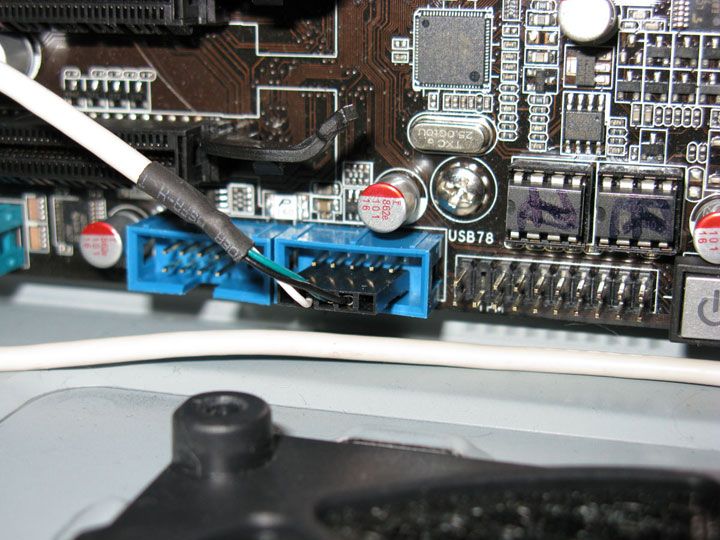
If this does not help, you can try to insert the USB flash drive into any other device: a radio or TV. Then you can definitely determine whether the matter is in the drive itself or not.
Solving problems with a flash drive using standard Windows methods
Suppose the computer stopped seeing the USB flash drive unexpectedly after a long time of inactivity. What to do? Most likely, you have the power saving function turned on. It lies in the fact that if you do not use for a long time USB devices, the system stops supplying power to these ports. You can change its settings by finding the Power Options icon in the Control Panel. Then adjust the “Balanced” or “High Performance” scheme by changing the advanced power settings.
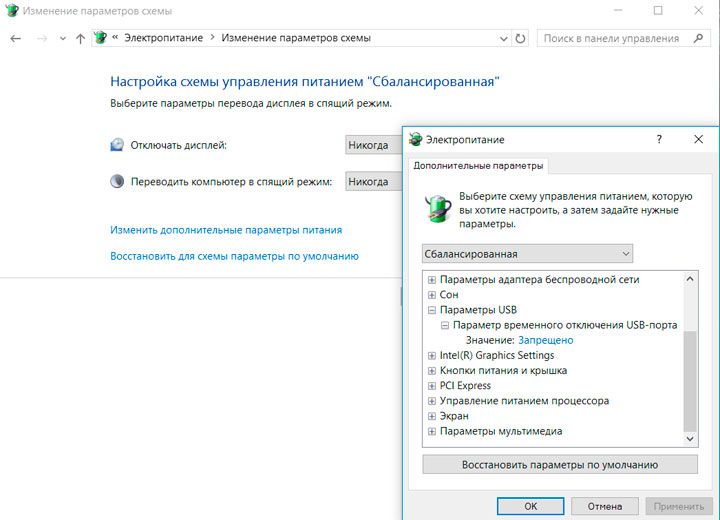
Power management can also be configured for the individual connected USB disk... Let's open Device Manager, then “ USB controllers”, Then with the right mouse button - properties of the storage device and with a tick, prohibit the shutdown of this device to save energy.
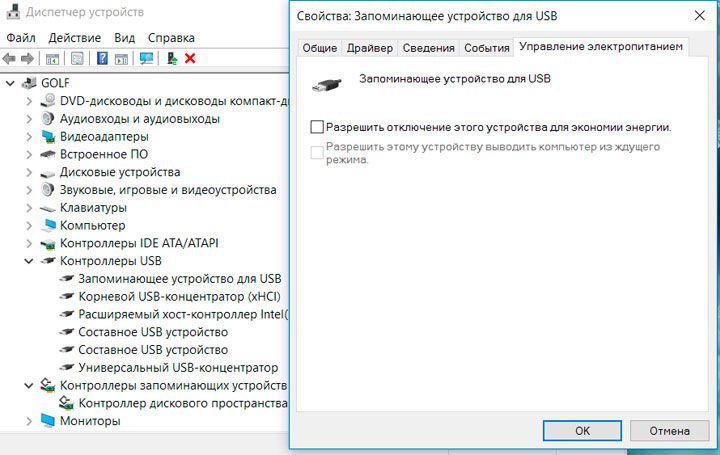
If a yellow triangle lights up in front of the flash drive, then you can first try to remove this device from the system, and then add it by updating the hardware configuration.
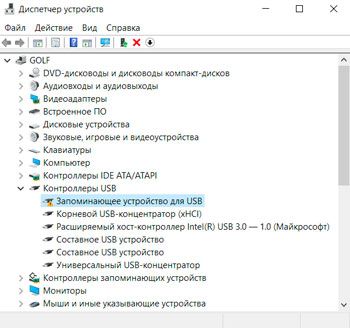

Next, let's move on to a simple standard Microsoft utility. We go to the help on the official Microsoft website and look for “Automatically diagnose and fix USB problems in Windows”. Click the “Download” button to get this utility on your computer, open the WinUSB file and carry out diagnostics.
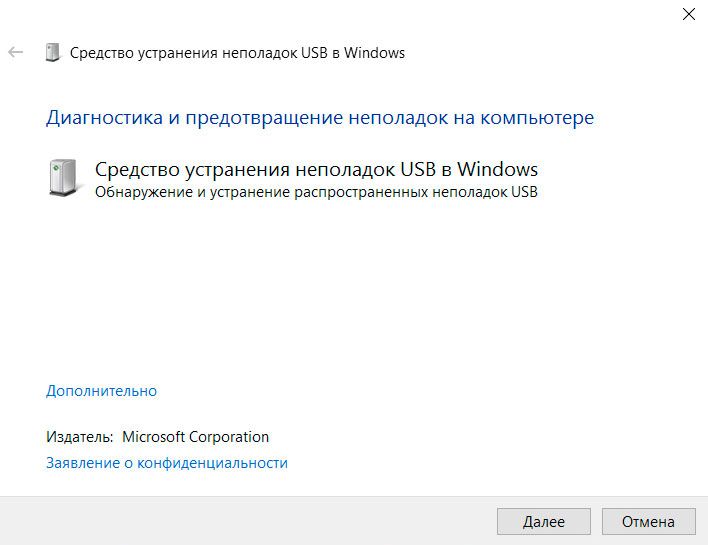
The USB drive letter may be the same as another drive letter. Let's check this with Windows tools called “Disk Management”. For example, in Windows 10, in the This PC window at the top, click on the Manage icon. This will bring up “Computer Management”. In the "Disk Management" section, we look at the names of all volumes on the computer. Here you can change the drive letter. This tool can help you determine if a removable device is working properly.
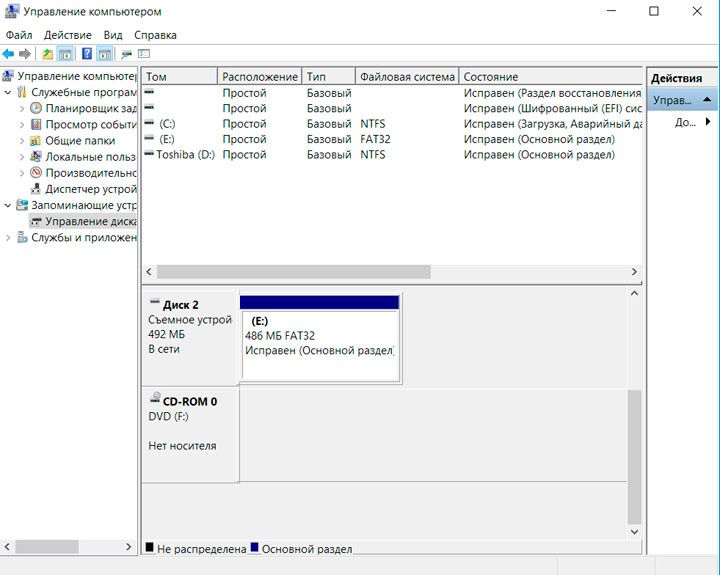
Treatment of a flash drive that the computer does not see
In the computer management, you can find an inserted USB flash drive, but it is faulty or the space is not allocated. It is likely that the flash drive is damaged and all data has been deleted. Then you should turn to special utilities for recovering files from removable drives.
To increase the chances of data reanimation, it is better not to write new files to the same flash drive and have other media for the recovered data.
For example, let's take a look at the most famous recovery program - Recuva. It is easy to use and free, which is why it is so popular among inexperienced users.
We download it from the official site. When installing, select Russian, then the types of files to be found.


If you do not remember which files were saved on the media, then we leave it as it is. We mark the place where you want to find the lost data.
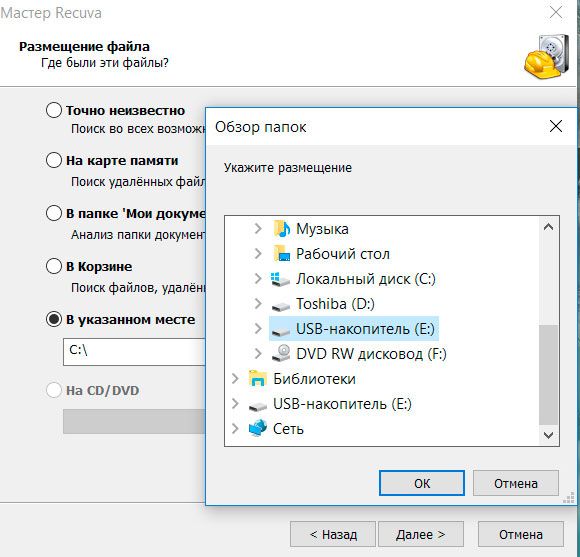
The program uses simple or in-depth analysis. The last method is the most effective, but it will take a little more time. Files to recover are marked with a green circle, and those that have already been lost are marked with red.

When on removable media there is valuable information, and the computer does not read the USB flash drive, then the person asks the question - what to do. It is too early to start worrying. There are many ways to try to solve this problem. About them and described above. If the flash drive is already damaged, then you should contact special utility to restore, for example, Recuva.
USB drives have become very popular nowadays, they are used by absolutely everyone, since it is convenient, inexpensive, and besides, it is not difficult to carry with you. But sometimes there are situations when the flash drive does not want to be displayed on the computer, and therefore I decided to tell you why the computer does not see the USB flash drive?
Today we will try to answer the question of what to do if the computer does not see the USB flash drive, thus we will consider the most common types of malfunctions and errors, both in hardware and software.
Problem with USB connectors
The most common reason for the lack of a USB flash drive in My Computer is when you insert it from the front of the computer - from the front, not from the back. The fact is that the connectors on the front of the computer may not work, or more precisely, they very often do not work due to bad contacts v motherboard... If the wizard recently came and disassembled your computer, then it is possible that he forgot to connect the cables or inserted them in the wrong place.
Attention! If you connected 2 different flash drives to your computer, which are not displayed in it, and besides into one connector, then do not connect anything else! There is a small percentage that the flash drives have burned out and if you do not want to further spoil your property, then do not insert anything. You can check these flash drives on another computer, if they are determined, then everything is fine with the flash drives, but you need to figure it out with your computer.
This can be fixed by opening system unit, having found these very wires there and connect to the right place. To find out exactly where to connect these wires, you will need to familiarize yourself with the documentation from your computer, which will explain how to connect the wires. It is possible that they are connected correctly, then just distort them - disconnect and reconnect.
Below I have posted photographs by which you can understand what the wires look like and where you need to connect them approximately.
Of course, before all these steps, you need to check if this is really so, insert the USB flash drive into the rear USB connector. By the way, here I will give you some advice: you can buy a special cable, one end of which is inserted from the back, and the other is located on the table into which you will insert your USB flash drive. The cable is needed for those users who have a problem with the front USB, but cannot do it. It may also be that the computer does not see the USB flash drive because of the software or hardware, but I will talk about this below.
Is the flash drive "live"?
Now consider the case when your computer is not to blame for anything, but the flash drive has already served its purpose. This option is not very good, but it can be reanimated in a 50/50 percentage. First, connect it to another computer, for example to a laptop, if you have one, or take it to your friends or acquaintances. If the USB drive is detected, then everything is in order with the flash drive and you need to deal with your computer, otherwise the situation will be the opposite.
There are signs of life - the indicator is flashing
Now let's find out why the computer does not see the USB flash drive when the indicator on it is on - there is power, but it is not detected in the computer due to a hardware or software error. The first problem, the computer supplies power, but it is not detected.
How then to be? We go to the "Start" menu, we see the search bar. We type there "Creation and formatting", the inscription appears on the left side of the window: "Creating and formatting sections hard disk", Click on it and get into the window for managing disks. Right-click on our flash drive and select the item: "Change the drive letter or path to the drive." Change the letter and save the changes.
Ah, these viruses
If you have not solved the problem of why the computer does not see the USB flash drive, then the following pitfalls that must be taken into account: viruses and, no matter how strange it may sound, antiviruses. First of all, you need to perform a full scan for viruses, if they are found, remove them and reboot.
Did not help? No viruses found? Then disable your antivirus. In addition, find in its settings automatic switching on at Windows startup if available, disable this feature while fixing the problem. Now restart your computer, if the flash drive is recognized, then you should deal with the computer.
BIOS
You should also check your USB settings in BIOS. To enter the BIOS, press F2, ESC or Delete after pressing the power button of the computer. Let's look at an example BIOS from Award.
So, when we got into the BIOS, go to the point Integrated Peripherals.
Now pay attention to the line USB Controller, on the left the value Enabled should be set - enable. If there is Disabled, then select Enabled, save the changes (F10) and restart the computer.
Windows assemblies
Already many times on the blog, I mentioned that you do not need to install various Windows assemblies to your computer. Put only original assemblies and do not listen to anyone!
Assemblies can be done by people versed in the computer, as well as simple enthusiasts who are just interested. Sometimes looking through the comments on torrents and forums, you can roughly understand what kind of assembly is in terms of quality, but to be honest, I only once installed an assembly that lasted no more than a week on the computer. Ask why? The modem was not detected and errors appeared that after installation new windows must not be.
Before installing this assembly, I read the comments of where it was downloaded from, and all users spoke well of it. But apparently not in my case.
Drivers
If the computer does not see the USB flash drive, then it is possible that you have a software error when the drivers do not work as expected - the system or drivers crashed. In this case, you need to help them.
Right click on your computer and select Properties. On the left, click on "Device Manager".
We are interested in the "USB Controllers" tab, in which your flash drive is located. Click on it with the right mouse button and select "Delete".
We take out the USB flash drive from the USB connector. We put it back. Then right-click on free space in the manager and click "Update hardware configuration" (this action may not be needed if a pop-up window appears at the bottom right, which says that a new device has been found and the drivers for it have been successfully installed).
If the drivers are not found, then look for USB drivers on the Internet or use automatic installation drivers using the program DriverPack Solution(those who are poorly versed in the computer, it will always be needed).
Try to format
The last option for fixing the problem is designed in case your flash drive is still identified and successfully displayed in the "My Computer" window, but does not want to open. There is one drawback - all files will be deleted. If you are not afraid, then go ahead! Right-click on the media, select "Format".
In the window that appears, we have to select the type file system NTFS and format the USB stick. It is possible to recover data after deletion, but there are no guarantees. I wrote about this in: "".
The flash drive is broken
The computer does not see the USB flash drive and what to do after the recommendations described above? And now for the worst. Nothing is eternal! Perhaps the flash drive has served its time and it's time to buy a new one. Also remember if you dropped it or accidentally hit something. If the flash drive breaks down mechanically, then you are unlikely to be able to repair it yourself.
If it has very important data, then go straight to the service center! Or do you want to lose them forever ?! Why the service center? If you have no experience in repairing, then you will understand all the nuances for a very long time, and at the end it will be very disappointing if you delete everything that is there with your own hands.
If you have a task to open a flash drive from a camera, then here's to you Additional Information: « ».
That's all I wanted to tell you. As you can see, there can be a lot of problems, and it is impossible to say for sure which of them you are facing. Therefore, you will have to use trial and error to determine the problem. I wish you the best of luck with that, and may from now on all your USB sticks are always and everywhere identified! All the best!
This video is not for beginners, but it will still be useful:
 Rashka-square quilted jacket Quilted jacket comics
Rashka-square quilted jacket Quilted jacket comics Ways to check the remainder of the traffic on the Beeline Checking the traffic on the Beeline modem
Ways to check the remainder of the traffic on the Beeline Checking the traffic on the Beeline modem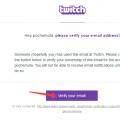 Create a Twitch Stream
Create a Twitch Stream